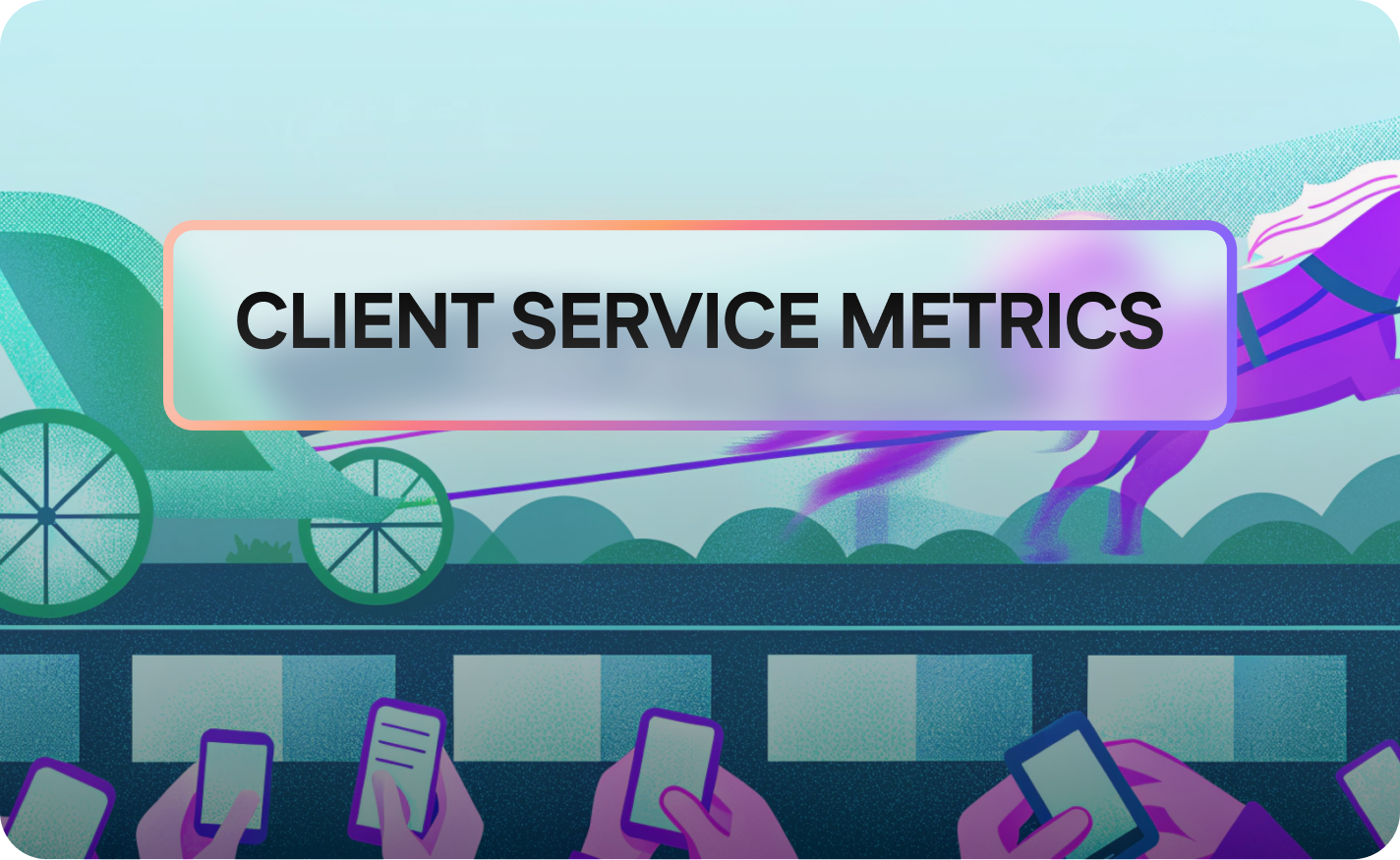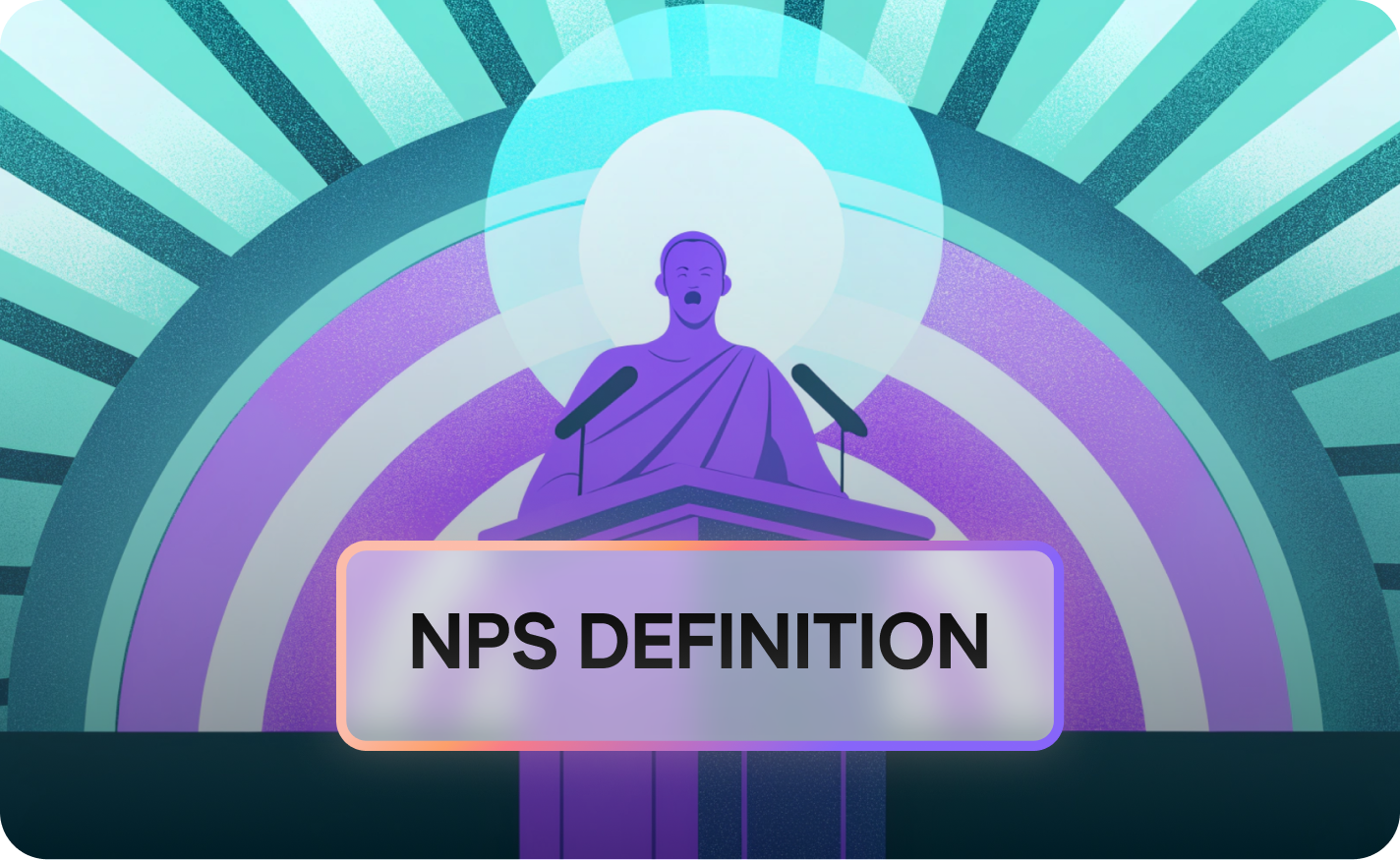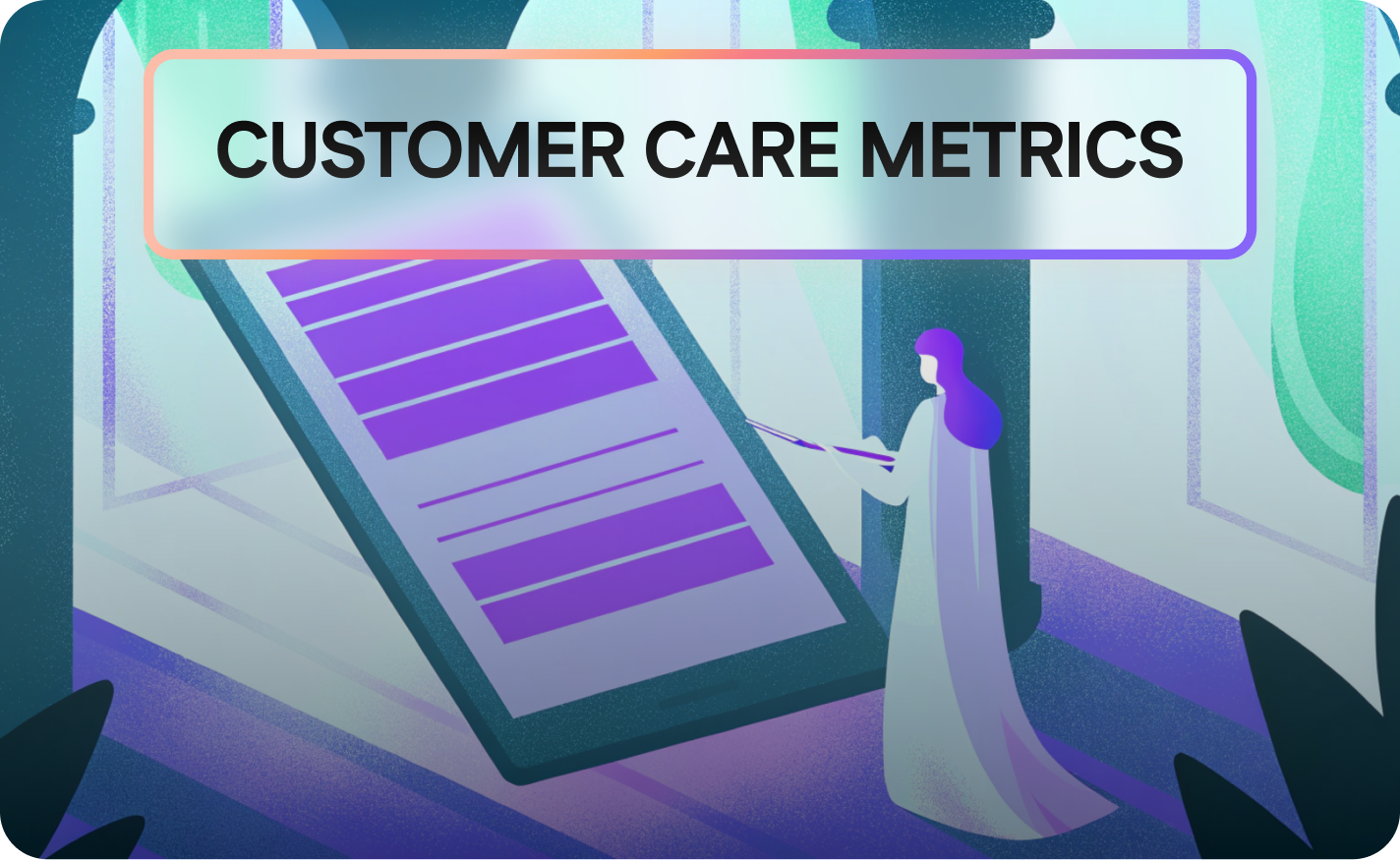Top Client Service Metrics to Measure and Track

In the realm of customer interaction, understanding how your service teams perform is paramount. Client service metrics provide a quantitative framework to measure customer satisfaction, enhance service quality, and ultimately foster customer loyalty. By tracking these essential customer service KPIs, businesses can gain actionable insights into their customer service operations, enabling data-driven decisions that address customer needs and improve service level agreements.
Introduction to Client Service Metrics

What Are Client Service Metrics?
Client service metrics are quantitative indicators used to evaluate the effectiveness of customer support processes. These metrics provide a structured way to measure key aspects of customer interaction, as outlined in the table below:
Client Service Metrics
- Customer Satisfaction: Customer satisfaction measurements.
- Service Quality: Overall quality of service interactions.
By monitoring these metrics, companies gain insights into how well they meet customer expectations and where improvements can be made, helping to improve service quality and enhance customer satisfaction.
Importance of Measuring Customer Service Metrics
Why is it so important to measure customer service metrics? The answer lies in the actionable insights these metrics provide, as these metrics offer a direct line of sight into customer sentiment and operational efficiency. By monitoring key metrics like CSAT and NPS, businesses can identify areas where they excel and areas needing improvement. This data-driven approach allows service teams to optimize processes, reduce customer churn rate, and foster greater customer retention, contributing to long-term success.
How Metrics Influence Customer Experience
How do these metrics directly influence the customer experience? Metrics like CSAT (customer satisfaction score) and CES (customer effort score) provide immediate feedback on the quality and ease of service. A high CSAT indicates that customers are pleased with their interactions, while a low CES suggests that customers are finding it difficult to resolve their issues. By actively monitoring and improving these metrics, companies can enhance the customer experience, leading to increased customer loyalty and positive word-of-mouth referrals, by measuring customer satisfaction and addressing customer issues quickly.
Key Customer Service Metrics

Customer Satisfaction Score (CSAT)
One of the most direct ways to gauge customer sentiment is through the Customer Satisfaction Score (CSAT). This key metric measures customer satisfaction with specific service interactions, often using a simple scale, such as 1-5. By calculating the percentage of satisfied customers, businesses can quickly assess the effectiveness of their customer support agents and identify areas where training or process improvements may be necessary, thus contributing to effective customer service.
Net Promoter Score (NPS)
The Net Promoter Score (NPS) is a powerful metric for gauging customer loyalty and predicting future growth. NPS asks customers how likely they are to recommend a product or service on a scale of 0-10. Based on their responses, customers are categorized as Promoters, Passives, or Detractors. By subtracting the percentage of Detractors from the percentage of Promoters, companies can determine their NPS, providing a clear indicator of customer advocacy, and contributing to long-term customer retention.
First Response Time (FRT)
In today's fast-paced world, speed is essential, making First Response Time (FRT) a crucial customer service metric. FRT measures the time it takes for a customer to get an initial response to their queries. A shorter FRT indicates that a company values its customers' time and is committed to providing timely support. By minimizing FRT, businesses can enhance customer satisfaction, reduce frustration, and improve their overall service quality. Try it yourself and find out how fast you respond to customer queries and how they feel about it.
Understanding and Calculating Key Metrics

Calculating Customer Satisfaction Score
Calculating the customer satisfaction score (CSAT) involves dividing the number of satisfied customers by the total number of responses and then multiplying by 100. For example, if 80 out of 100 customers rate their experience a 4 or 5 on a 5-point scale, the CSAT score is 80%. This key metric helps service teams quickly gauge customer sentiment regarding specific service interactions and identify areas for improvement. By closely monitoring the customer satisfaction score, companies can enhance customer satisfaction and address customer service performance issues promptly.
Net Promoter Score Calculation and Significance
The Net Promoter Score (NPS) is calculated by subtracting the percentage of detractors from the percentage of promoters. Promoters are those who rate the product or service a 9 or 10, while detractors rate it between 0 and 6. This key metric is significant because it provides insight into customer loyalty and the likelihood of customer retention. A high NPS indicates that many customers act as advocates for the product or service, while a low score suggests significant customer service performance issues that need addressing to reduce customer churn rate.
First Response Time and Its Impact
First Response Time (FRT) is the average time it takes for customer service teams to provide an initial response to customer queries. To calculate FRT, sum the response times for all tickets within a specific period and divide by the total number of tickets. A shorter FRT typically leads to higher customer satisfaction, as it demonstrates that the company values the customer’s time. Improving FRT can significantly enhance the customer experience, reduce customer effort score, and foster greater customer loyalty. Improving FRT is an effective customer service strategy.
Analyzing Customer Service Performance

Why Track Customer Service Metrics?
Why is tracking customer service metrics so important? Monitoring these metrics provides essential customer service data for evaluating the effectiveness of service interaction. By tracking metrics like customer satisfaction score, customer effort score, and net promoter score, businesses gain actionable insights to improve service quality. Understanding these key performance indicators (KPIs) allows companies to identify areas where their customer support agents excel and areas that need improvement, thereby enhancing overall customer service performance and addressing customer needs more effectively.
Benefits of Regular Metric Analysis
Regular analysis of customer service metrics offers numerous benefits, including the ability to pinpoint areas for optimization in customer support. By consistently monitoring customer feedback through customer satisfaction score (CSAT) and other key metrics, businesses can identify recurring issues and adjust their service strategy accordingly. This proactive approach helps in reducing customer effort, improving customer satisfaction, and enhancing customer loyalty, leading to better customer retention and a more positive overall customer experience.
Key Performance Indicators (KPIs) in Customer Service
Key Performance Indicators (KPIs) in customer service are essential for measuring and improving the effectiveness of customer service operations. By monitoring metrics like those shown in the table below, businesses can gain a comprehensive view of their customer service performance.
KPI: CSAT
Description: Customer Satisfaction Score
KPI: NPS
Description: Net Promoter Score
Other customer service KPIs include First Response Time (FRT) and Customer Effort Score (CES). LiveSession aims to make product decisions faster and easier by providing a suite of product analytics tools. These tools facilitate continuous product discovery, data-informed decisions, and enhanced feature adoption, all of which contribute to better service level agreements and customer success metrics.
Types of Customer Service Metrics to Track

Operational Metrics
Operational metrics are crucial for understanding the efficiency and effectiveness of the customer service team. These metrics help businesses identify bottlenecks, optimize workflows, and ensure customer queries are handled promptly. Monitoring these metrics improves service quality and customer satisfaction. An effective customer service strategy will leverage these metrics to enhance operational efficiency.
Metric: First Response Time (FRT)
Description: Time taken to provide the first response to customer queries.
Metric: Average Resolution Time (ART)
Description: Average time taken to resolve customer issues.
Metric: First Contact Resolution (FCR)
Description: Percentage of customer queries resolved during the first interaction.
Customer Experience Metrics
What the directly? metrics, such as the (CSAT) and (CES), offer insights into how customers perceive their interactions. A high indicates that customers are pleased with the service they received, while a low suggests that customers found it easy to resolve their . By closely monitoring these , businesses can tailor their services to
more effectively, ultimately enhancing . Remember that a positive is crucial for long-term success.
Retention and Loyalty Metrics
Why are and loyalty metrics so vital? and loyalty metrics, including the Net Promoter Score (NPS) and , provide a longer-term view of . A high Net Promoter Score (NPS) suggests that customers are likely to recommend the , while a low indicates that customers are staying with the company. Monitoring these can help businesses gauge the overall health of their customer relationships, identify potential areas of concern, and implement strategies to foster greater .
Optimizing Service Strategy with Metrics
Enhancing Customer Experience Through Metrics
How can enhance the ? LiveSession helps to visualize user interactions, identifying friction points. Analyzing user behavior can reveal areas where customers struggle, leading to targeted improvements in usability and overall experience. By understanding how users navigate the , businesses can streamline processes, reduce , and enhance , all while happiness and increase conversions.
Implementing Metrics for Service Teams
How do you implement for ? By implementing for , businesses can gain a more precise understanding of individual and team performance. These insights facilitate targeted training, workflow optimization, and improved decision-making across all levels. With LiveSession being an all-in-one platform, it helps people enhance feature adoption, leading to better service quality and . Effective implementation of can transform raw into actionable strategies.
Adjusting Strategies Based on Metric Analysis
Why is it crucial to adjust strategies based on analysis? Analyzing and provides valuable insights into what is working and what is not. By continuously monitoring , Net Promoter Score (NPS), and (CES), businesses can adapt their approaches to better , reduce , and improve overall . This iterative process is essential for maintaining a competitive edge and fostering long-term customer relationships.
Case Studies: Real-World Applications of Metrics

Five Guys: A Case Study on Customer Engagement Metrics
How did Five Guys use metrics to boost engagement? Five Guys prioritized customer service and involved employees in content creation, tracking customer engagement metrics and social media sentiment. By using tools like Hootsuite and geo-locational data for marketing, they achieved over 1 million followers and expanded to 1,200 locations worldwide [Duct Tape Marketing: Social Customer Service Metrics]. This showcases how social media metrics can boost brand loyalty and offer actionable insights, enhancing the overall customer experience. Through this they were able to measure customer sentiment for their customer support.
UPS: Leveraging Metrics for Improved Service
How did UPS improve service using metrics? UPS monitored conversation sentiment, engagement, organic audience growth, and pull-through on Calls to Action (CTAs). They created a Customer Communications team and a social customer service team, primarily using Twitter and Facebook to gather customer feedback [Duct Tape Marketing: Social Customer Service Metrics]. This allowed them to proactively address customer issues and identify opportunities, demonstrating how customer feedback can refine a and .
Southwest Airlines: Success Through Real-Time Monitoring
How did Southwest Airlines achieve success through real-time monitoring? Southwest Airlines focused on engagement rate, share of voice, response time, response rate, and clicks, maintaining a Listening Center for real-time social media monitoring [Duct Tape Marketing: Social Customer Service Metrics]. They empowered employees, including flight attendants, to engage on social media and ensure one-contact resolution. This dedication landed them on Fortune’s Top 50 Most Admired Companies list, demonstrating how timely responses boost loyalty and reputation. With the data collected by their they were able to provide excellent which increased their .
Conclusion and Call to Action
Summarizing the Importance of Client Service Metrics
Why are client service metrics so important? The most are vital for optimizing , with , Net Promoter Score (NPS), and First Response Time (FRT) providing actionable insights. By and addressing with informed decisions based on , businesses can make sure that the meets and exceeds . relies on these to drive measurable improvements in and .
Next Steps: Implementing Metrics in Your Strategy
What should you do next to implement metrics? To implement in your strategy, start by identifying the most relevant for your business goals. Begin tracking these , such as the or , and use the collected to identify areas for improvement. Then adjust strategies based on analysis and watch how your scores change.
Encouragement to Analyze Your Own Customer Service Metrics
Ready to improve your customer service? Try analyzing your own today to drive measurable improvements in . By understanding and making data-driven decisions, you can enhance and optimize your . Remember, the goal is to happiness. With LiveSession it is now faster and easier for people to enhance feature adoption, leading to better and .
Related articles
Get Started for Free
Join thousands of product people, building products with a sleek combination of qualitative and quantitative data.



